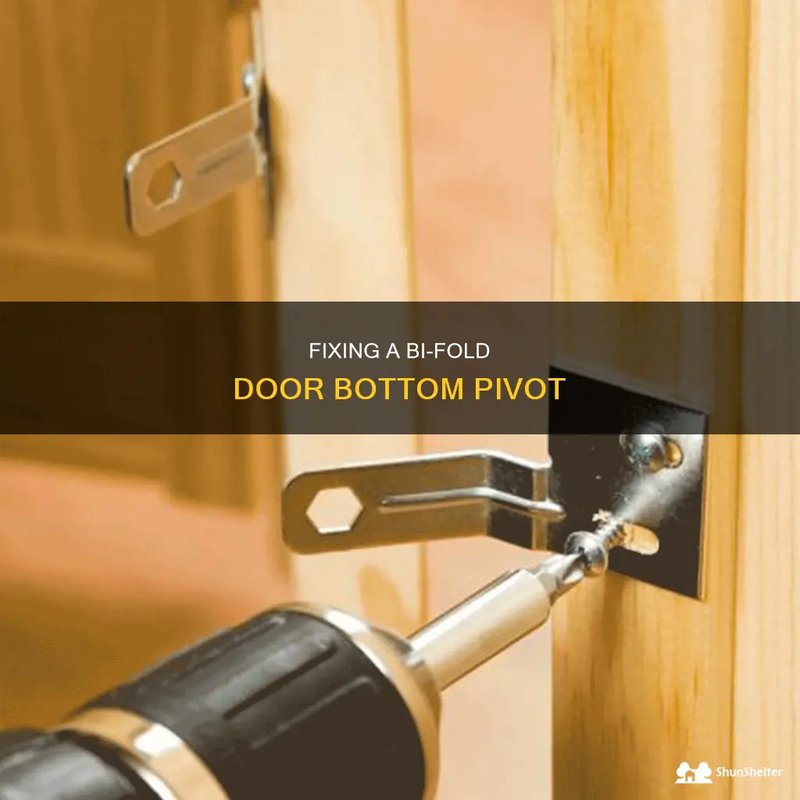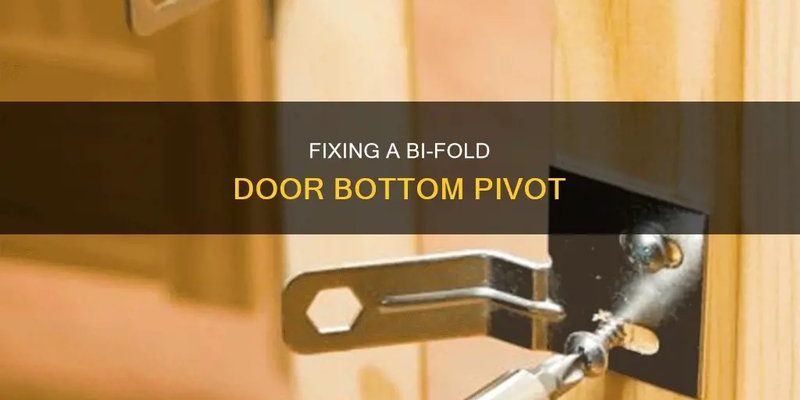
Securing that bottom pivot might seem daunting, but it’s actually a straightforward task. With a few simple tools and the right approach, you can have your door operating smoothly again. Whether you have a standard model or a more specialized brand, like a specific kind of Kwikset or Andersen bi-fold door, the methods I’ll outline here should work for you. Let me walk you through some effective methods to get that door back on track.
Understanding the Bi-Fold Door Mechanism
To tackle the issue of a loose bottom pivot, it helps to understand how a bi-fold door operates. Picture a closet door that folds in on itself, rather than swinging wide open like a traditional door. These doors are typically mounted on a track, with a pivot point at the bottom to allow for that unique folding action.
The bottom pivot is crucial because it supports the weight of the door and helps it glide along the track. If this pivot is loose, the door can become misaligned or difficult to operate. Imagine trying to use a bicycle with a wobbly wheel; it simply won’t perform well.
Now, let’s look at some solutions to secure that pivot and restore your door’s functionality.
Tools You Will Need
Before diving into the repair, it’s important to gather the right tools. Having everything ready not only makes the process smoother but also saves you from running back and forth. Here’s what you’ll typically need:
- Screwdriver: A flathead or Phillips, depending on your door’s fittings.
- Level: To ensure the door hangs straight after adjustments.
- Drill: Useful if you need to secure the pivot with new screws.
- Replacement screws: If the old ones are stripped or damaged.
- Wooden shim: Helpful for adjusting the height if needed.
Having these tools on hand will make it easier to execute the following steps.
Step-by-Step Guide to Secure the Bottom Pivot
Let’s break down the process of securing your loose bi-fold door bottom pivot into simple steps. Each step is designed to be easy to follow, even if you’re new to DIY repairs.
1. Remove the Door
Start by gently lifting the bi-fold door off its track. Most bi-fold doors can be removed by pulling the top pivot out of its socket and then tilting the door to disengage the bottom pivot. If you’re having trouble, refer to your specific door’s manual for guidance.
2. Inspect the Bottom Pivot
With the door off, take a close look at the bottom pivot. Is it cracked or worn? Sometimes, the issue might be with the pivot itself rather than the screws. If it looks damaged, you might need to replace it entirely.
3. Tighten or Replace Screws
If the pivot seems intact, use your screwdriver to tighten the screws. If they’re stripped, consider using a slightly longer screw for a better grip. If the screws are beyond saving, replacing them will likely resolve the loose pivot issue. Don’t worry; this is a common fix.
4. Reinstall the Door
Once tightened or replaced, carefully rehang the door. Make sure that the top pivot is seated correctly in its bracket, and then align the bottom pivot back in the track.
5. Test the Door
Before calling it a day, test your work by opening and closing the door. It should glide smoothly without jamming or sagging at any point. Use your level to check for alignment. If it’s not perfect, you can use your wooden shim to elevate the door slightly until it hangs just right.
Using Lubricants for Smooth Operation
Sometimes, the issue isn’t just about securing the pivot. Lack of lubrication can also lead to a sticky door that feels heavier than it should. Here’s how to use lubricants effectively:
– Choosing the Right Lubricant: Go for a silicone-based spray or a dry lubricant. These won’t attract dust like traditional oils do, which is a plus for keeping things clean.
– Applying the Lubricant: Spray a light coating onto the pivot and the tracks. This can help with the door’s movement and longevity, ensuring that the new adjustments hold up over time.
– Regular Maintenance: It’s a good idea to apply lubricant every few months, especially if you notice any friction or noise when operating the door.
Common Troubleshooting Tips
Even after you’ve secured the bottom pivot, other issues might arise. Here’s a quick troubleshooting guide to help you navigate potential problems.
- Door Misalignment: If the door still seems off after adjustments, double-check that the top pivot is secure and that the door is level.
- Sticking Tracks: If the door sticks when opening or closing, it might be time to clean the tracks. Dust and debris can accumulate, so a quick wipe-down can make a big difference.
- Worn Components: If you find that the door continues to have issues, consider checking other components, like the top hinge or track, for wear and tear.
Remember, a little troubleshooting goes a long way in maintaining your bi-fold door’s functionality.
When to Call a Professional
While many issues can be resolved at home, there are times when it’s best to bring in a pro. If you find that after multiple attempts the door still doesn’t operate smoothly, or if you’re unfamiliar with DIY repairs, professional help can save you time and stress.
Not only can a professional assess the situation more thoroughly, but they can also identify underlying issues you may have missed. Plus, they come equipped with the right tools and experience to get the job done efficiently.
Securing a loose bi-fold door bottom pivot may seem like a small fix, but ignoring it can lead to bigger problems down the line. By understanding the mechanics and following the steps to adjust and maintain your door, you can ensure it operates smoothly and effectively.
Honestly, a little maintenance can go a long way. The next time you hear that annoying creak or feel resistance when opening the door, you’ll know just what to do. With the right tools and these methods in your toolkit, you can keep your bi-fold door functioning beautifully for years to come.
